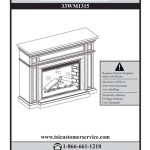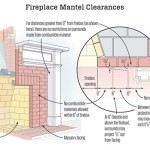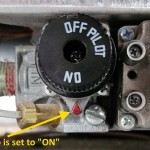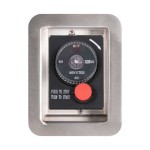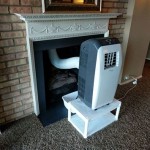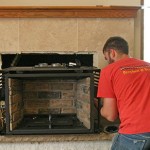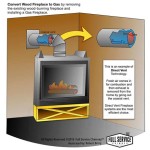Heat & Glo Fireplace: Troubleshooting Gas Supply Issues in Singapore
Heat & Glo fireplaces provide warmth and ambiance, making them a popular choice for homeowners in Singapore seeking an alternative heating solution or a focal point for their living spaces. However, like any gas-powered appliance, issues can arise concerning the gas supply. Understanding the potential causes and troubleshooting steps is crucial for maintaining optimal fireplace performance and ensuring safety.
This article will explore common reasons why a Heat & Glo fireplace might not be receiving gas in Singapore, focusing on factors specific to the local environment and infrastructure. It will cover potential problems ranging from simple user errors to complex gas line issues, providing a comprehensive guide for diagnosis and resolution. Remember, any work involving gas lines should be performed by a licensed gas technician to prevent potentially dangerous situations.
1. Verification of Basic Gas Supply
Before delving into more complex troubleshooting, verifying the most basic aspects of the gas supply is paramount. Often, the simplest explanation is the correct one. Start by confirming that the main gas supply to the property is active. This may seem obvious, but inadvertent shutoffs can occur due to maintenance work or accidental valve closures.
Check the gas meter serving the property. Ensure the main valve is open and that there are no indicators suggesting a disruption in service from the gas provider (typically City Gas in Singapore). If the gas supply to the entire property is interrupted, contacting City Gas is the immediate next step. Do not attempt to resolve a widespread gas outage independently; qualified professionals are required to restore service.
Next, locate the shut-off valve specifically for the fireplace. This valve is usually located near the fireplace itself, either behind an access panel or in an adjacent utility area. Verify that this valve is fully open. Sometimes, these valves can be partially closed, restricting the gas flow and preventing the fireplace from igniting. A quarter-turn ball valve is a common type, easily indicating its position by the handle alignment; a handle aligned with the pipe is open, and perpendicular is closed.
If the main gas supply and the fireplace's shut-off valve are confirmed to be open and functioning, and the fireplace still doesn't ignite, the problem likely lies elsewhere within the fireplace system itself. Proceed to investigate other potential causes related to the internal workings of the appliance.
2. Pilot Light and Igniter System Malfunctions
Many Heat & Glo fireplaces utilize a pilot light ignition system. The pilot light is a small, continuous flame that ignites the main burner when heat is called for. If the pilot light is not lit or is malfunctioning, the main burner will not receive the necessary gas to ignite.
First, attempt to manually light the pilot light according to the manufacturer's instructions, usually found in the fireplace's user manual or on a label near the control panel. This process typically involves holding down a control knob while pressing an igniter button, which generates a spark to ignite the gas flowing to the pilot. If the pilot light ignites and stays lit after releasing the control knob, the problem may have been a temporary obstruction or a weak initial spark.
If the pilot light fails to ignite, the igniter system could be faulty. The igniter is responsible for creating the spark that ignites the gas. Check the igniter electrode (the small metal rod near the pilot light assembly) for any signs of damage, corrosion, or dirt. Clean the electrode carefully with a soft cloth. If the electrode is visibly damaged, it may need replacement by a qualified technician.
Another potential culprit is the thermocouple or thermopile. These devices are safety sensors that detect the presence of the pilot light flame. If the thermocouple/thermopile does not sense the flame, it will shut off the gas supply to the main burner, preventing gas from accumulating and creating a hazardous situation. A faulty thermocouple/thermopile will prevent the pilot light from staying lit even after manual ignition. Testing and replacement of these components should be performed by a licensed gas technician.
If the pilot light ignites but goes out shortly after releasing the control knob, the issue is likely with the thermocouple/thermopile or a dirty pilot light orifice. A dirty orifice can restrict gas flow to the pilot, resulting in an unstable flame that the safety sensor fails to detect. Cleaning the orifice should be done with extreme care, using a specialized pilot orifice cleaning tool or a very fine wire. Avoid using anything that could enlarge the orifice, as this can affect the pilot light's performance and efficiency.
3. Gas Line Obstructions and Regulator Issues
Even if the main gas supply and pilot light system are functioning correctly, obstructions within the gas line or a malfunctioning gas regulator can prevent sufficient gas from reaching the main burner. The gas line connecting the main supply to the fireplace can accumulate debris, corrosion, or even insect nests over time, especially in Singapore's humid climate. These obstructions can restrict gas flow, leading to ignition problems.
Similarly, the gas regulator plays a crucial role in maintaining a consistent gas pressure to the fireplace. If the regulator malfunctions, it may deliver insufficient gas pressure, preventing the main burner from igniting properly. A gas regulator is a complex mechanical device and should only be inspected and repaired by a qualified gas technician.
Symptoms of a gas line obstruction or regulator issue can include a weak or sputtering flame, difficulty igniting the main burner, or the fireplace shutting off unexpectedly during operation. In some cases, a faint smell of gas might be present, indicating a possible leak. If any gas odor is detected, immediately shut off the gas supply to the fireplace and contact a licensed gas technician to investigate the source of the leak.
Addressing gas line obstructions typically involves disconnecting the gas line (after shutting off the gas supply, of course) and clearing any debris or corrosion. This may require using compressed air or specialized cleaning tools. However, due to the safety risks involved, this task is best left to a professional. Similarly, testing and repairing or replacing a faulty gas regulator requires specialized equipment and expertise.
Furthermore, consider the possibility of water condensation in the gas lines. Singapore's high humidity can lead to condensation forming within the pipes, especially if the lines are not properly insulated. This water can obstruct the gas flow and prevent the fireplace from operating correctly. A qualified gas technician can assess and address condensation issues within the gas line system.
In addition to physical obstructions and regulator malfunctions, the size of the gas line itself can be a factor. If the gas line is undersized for the fireplace's gas demand, it may not be able to deliver sufficient gas volume, especially during periods of peak usage. This is more likely to be a problem in older installations or if the fireplace has been upgraded without considering the gas line capacity. Correcting an undersized gas line involves replacing it with a larger diameter pipe, a task that requires professional expertise and adherence to local gas regulations.
Another less common, but possible, issue is the presence of air in the gas line. Air can enter the gas line during maintenance or repairs, and it needs to be purged before the fireplace can operate correctly. Purging a gas line involves carefully bleeding the air out of the system, following specific procedures to avoid creating a hazardous situation. This task should only be performed by a qualified gas technician.
Regular maintenance, performed by a certified technician, is crucial for preventing gas supply issues and ensuring the safe and efficient operation of Heat & Glo fireplaces in Singapore. This maintenance should include inspecting the gas lines for leaks and corrosion, cleaning the pilot light assembly, testing the gas regulator, and verifying the overall functionality of the fireplace system. Proactive maintenance can identify and address potential problems before they escalate into major issues, minimizing downtime and ensuring continued enjoyment of your fireplace.

Heat Glo Gas Fireplace Troubleshooting

Heat Glo Gas Fireplace Operation

Heat N Glo Stove Pe

Heat Glo 6k Modern

Heat Glo Fireplaces Troubleshooting Gas Log Fires Melbourne

Heat Glo 6kl 36 Gas Fireplace Tranquil Greige Refractory Chadwicks S

10 Things You Need To Know About Your Heat Glo Fireplace

Heat Glo I25x Insert Gas Heater

Heat Glo 6kl 36 Gas Fireplace Tranquil Greige Refractory Chadwicks S

5 Surprising Reasons Your Gas Fireplace Won T Turn On
Related Posts

